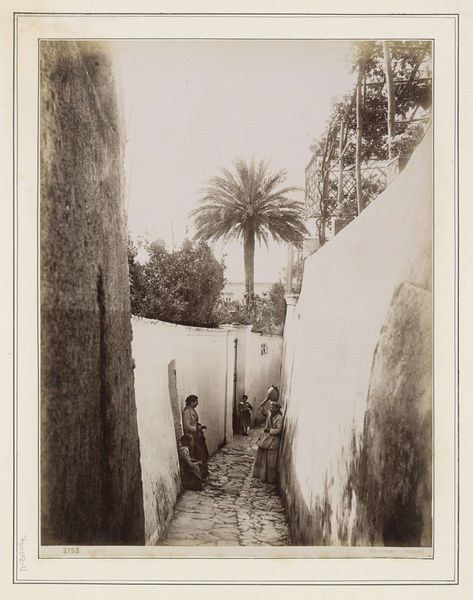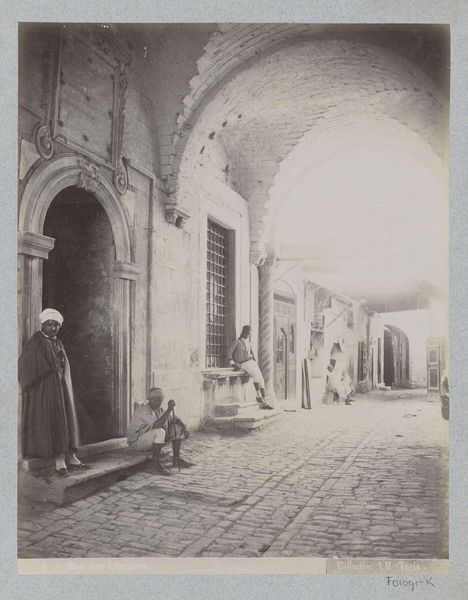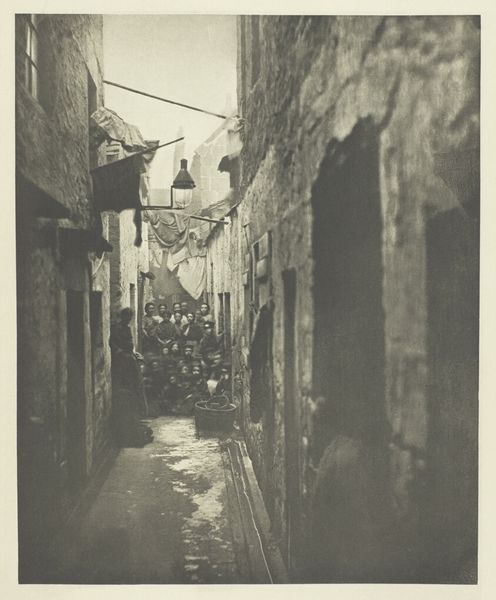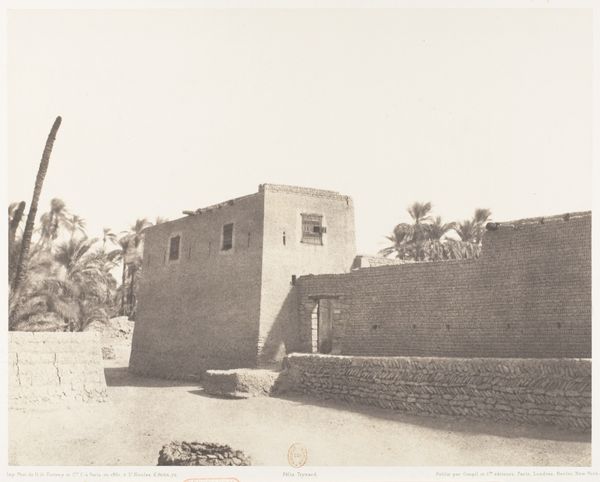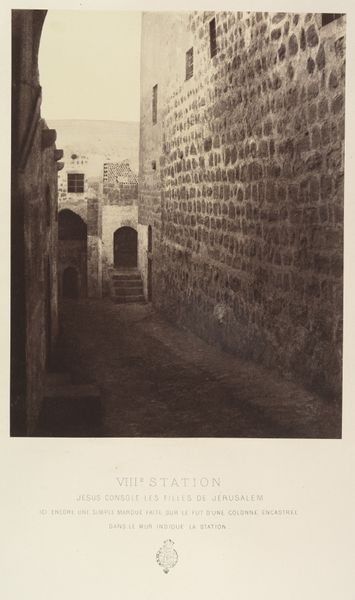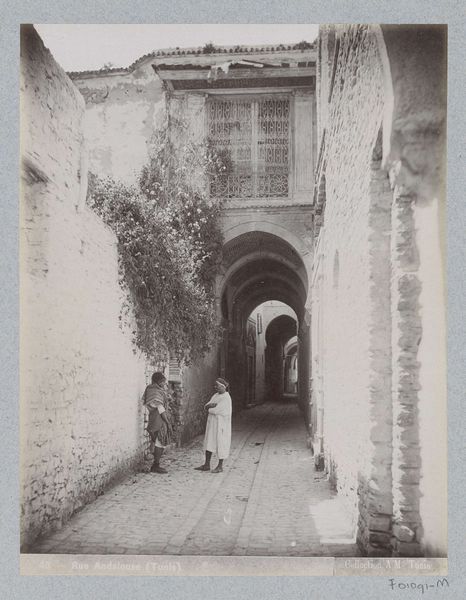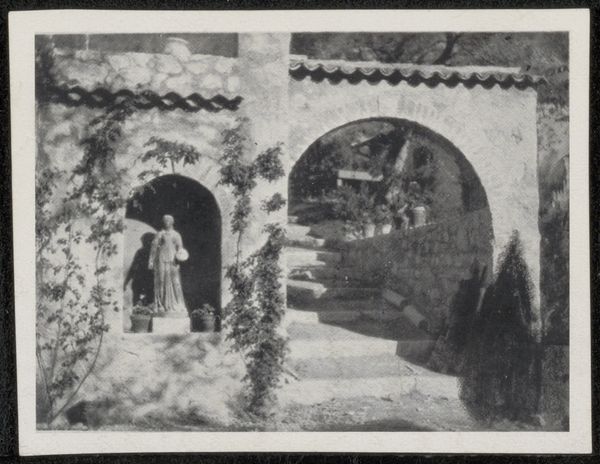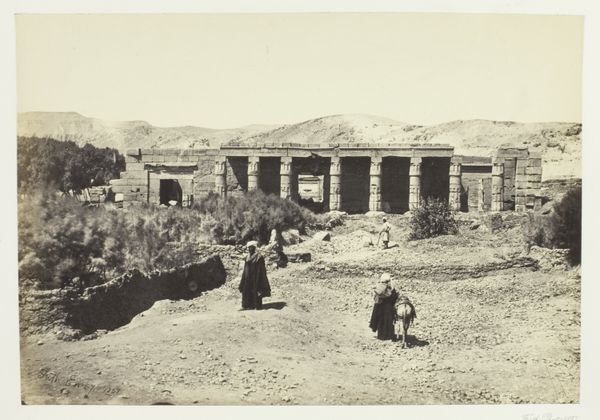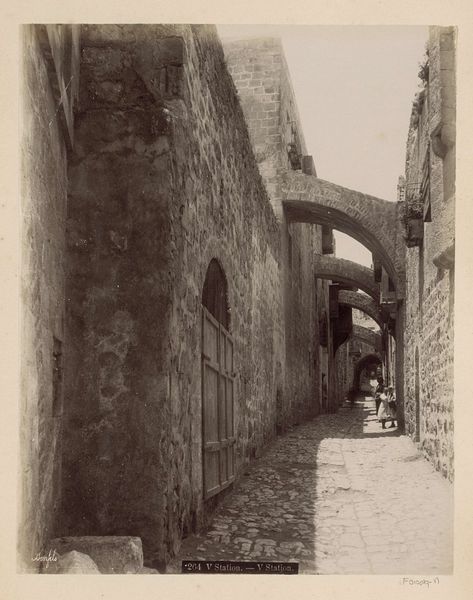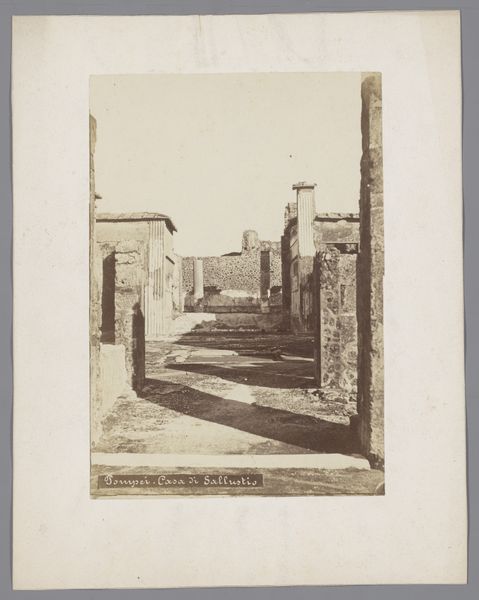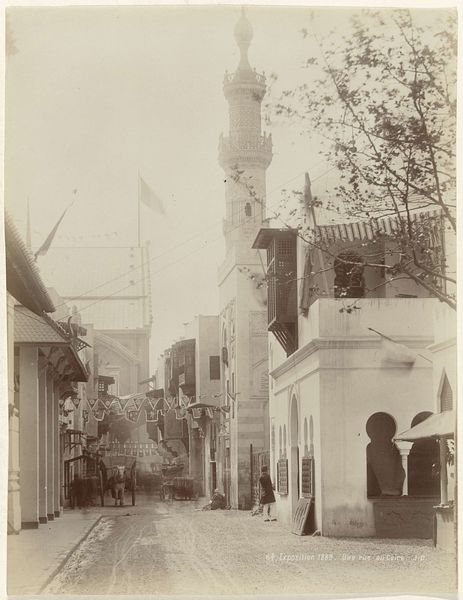
print, photography, gelatin-silver-print
# print
#
landscape
#
street-photography
#
photography
#
gelatin-silver-print
Dimensions: height 140 mm, width 84 mm, height 124 mm, width 184 mm
Copyright: Rijks Museum: Open Domain
Curator: This gelatin silver print, entitled "Straatje in Isphahan, Perzië" which translates to "Street in Isfahan, Persia," is attributed to A.G.A. van Eelde, possibly around 1925. It's a compelling scene. Editor: It certainly is. My immediate reaction is that it conveys a sense of quietude, almost timelessness. The monochrome tones enhance the feeling of stepping back into a different era, and the framing feels very intentional, doesn't it? Curator: It does. Van Eelde captures not just a physical location, but a moment in the social fabric of Isfahan. Notice the figures – their clothing, their posture, their movement or lack thereof—it speaks to daily life and the pedestrian experience of the city. Editor: And the street itself acts as a corridor into the deeper historical context. The worn facades of the buildings, with their repeated archways, feel monumental yet also fragile. It makes me think about whose stories are usually left out when documenting such settings? Curator: That's a very important point. The photographic medium can inadvertently privilege the dominant narratives by often framing a single, reductive version of history. These visuals sometimes obfuscate class, gender, or socio-political marginalization. However, images like this offer the ability to revisit, challenge, and rethink those power dynamics. Editor: Precisely! Looking closely, I see how light and shadow play across the scene. Note how the texture in this street gives a visceral, tactile impression, and also brings out all the different footprints embedded in it. Who traversed this very ground decades ago? The question evokes a sense of connection to a forgotten past. Curator: Indeed. Photography in the early 20th century served as an important visual document, creating an image repertoire about various cultures around the world. Works like this show how those photographs have embedded themselves within political ideologies or institutional mandates for archiving knowledge about these communities. Editor: In the present, we can repurpose this photo for activism, by highlighting a more globalized, decolonized way of viewing this representation. It would be amazing to invite some contemporary Persian artists to use it as an inspiration. Curator: This image reminds me that artworks from the past can still speak to the present. Editor: Yes, hopefully, we'll make that conversation much richer than it was a century ago.
Comments
No comments
Be the first to comment and join the conversation on the ultimate creative platform.
